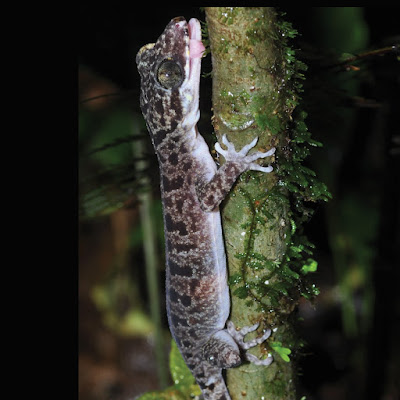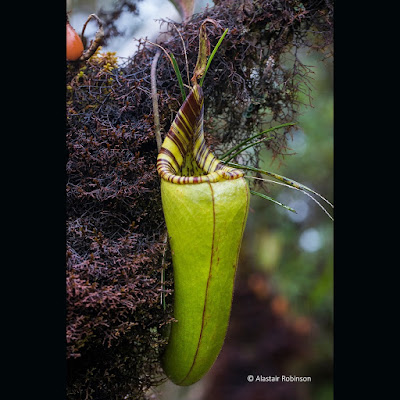[Most Recent Entries] [Calendar View]
Monday, February 10th, 2020
| Time | Event | ||||
| 10:06a | [Herpetology • 2020] Cyrtodactylus crustulus • A New Species of Cyrtodactylus Gray (Gekkonidae: Squamata) from Manus Island, and extended Description and Range Extension for Cyrtodactylus sermowaiensis (De Rooij)
Abstract Systematic investigations of vertebrate faunas from the islands of Melanesia are revealing high levels of endemism, dynamic biogeographic histories, and in some cases surprisingly long evolutionary histories of insularity. The bent-toed geckos in the Cyrtodactylus sermowaiensis Group mainly occur in northern New Guinea and nearby islands, however a further isolated population occurs on Manus Island in the Admiralty Archipelago approximately 300 km to the north of New Guinea. Here we first present a review of the genetic diversity, morphological variation and distribution of Cyrtodactylus sermowaiensis from northern New Guinea. Genetic structure and distributional records within Cyrtodactylus sermowaiensis broadly overlap with underlying Terranes in northern New Guinea, suggesting divergence on former islands that have been obscured by the infill and uplift of sedimentary basins since the late Pleistocene. Based on a combination of genetic and morphological differentiation we then describe the population from Manus Island as a new species, Cyrtodactylus crustulus sp. nov. This new species emphasises the high biological endemism and conservation significance of the Admiralty Islands, and especially Manus Island. Keywords: Reptilia, Adelbert Terrane, Admiralty Islands, Central Cordillera, insular endemism, North Papuan Mountains, Sepik Terrane, Sepik River
Cyrtodactylus sermowaiensis (de Rooij, 1915) De Rooji’s bent–toed gecko Cyrtodactylus crustulus sp. nov. Manus bent-toed gecko Cyrtodactylus sp. ‘Manus’ Tallowin et al. 2018. p. 33 Etymology: Crustulum “cake”. Latin (masculine) meaning cake or pastry; used in reference to the small cake-shaped markings on the posterior dorsal region of the head and similar-shaped indentations along the edges of the nuchal band. Paul M. Oliver, Ryan Hartman, Cameron D. Turner, Taylor A. Wilde, Christopher C. Austin and Stephen J. Richards. 2020. A New Species of Cyrtodactylus Gray (Gekkonidae: Squamata) from Manus Island, and extended Description and Range Extension for Cyrtodactylus sermowaiensis (De Rooij). Zootaxa. 4728(3); 341–356. DOI: 10.11646/zootaxa.4728.3.3 | ||||
| 2:35p | [Botany • 2020] Nepenthes fractiflexa (Nepenthaceae) • A New Bornean Pitcher Plant exhibiting Concaulescent Metatopy and A High Degree of Axillary Bud Activation
Abstract Nepenthes fractiflexa is described as a new species from Sarawak and Kalimantan. The species is characterised by a number of unusual growth habits: plants readily produce aerial offshoots from their leaf axils, giving rise to a highly branched architecture of a complexity rarely seen in the genus; even those axillary buds not destined to develop further are activated and often elaborated into bract-like prophylls up to 5 cm long; and the inflorescence emerges close to the middle of the internode rather than from the leaf axil, as is typical of all other known species, leading us to make the first proposal for concaulescence in Nepenthes. These traits—coupled with the plant’s distinctive, long-decurrent petiolar wings and fractiflex climbing stems—distinguish it from its putative closest relative, N. mollis. The known distributions of N. fractiflexa and N. mollis are reviewed in light of recent discoveries. The apparent geographical disjunction between the two species is discussed in the context of edaphic and other ecological factors. Owing to its large range and remote, predominantly ridgetop habitat—but small number of recorded localities and individuals—the conservation status of N. fractiflexa is assessed as Near Threatened under the IUCN 3.1 criteria. Keywords: Borneo, Malesia, Nepenthaceae, new species, non-core Caryophyllales, taxonomy, Eudicots Michal R. Golos, Alastair S. Robinson, Marc Barer, Martin Dančák, Jean de Witte, Adrian Limberg, Noorhana Binti Mohd Sapawi and Wewin Tjiasmanto. 2020. Nepenthes fractiflexa (Nepenthaceae), A New Bornean Pitcher Plant exhibiting Concaulescent Metatopy and A High Degree of Axillary Bud Activation. Phytotaxa. 432(2); 125–143. DOI: 10.11646/phytotaxa.432.2.3 |
| << Previous Day |
2020/02/10 [Calendar] |
Next Day >> |




